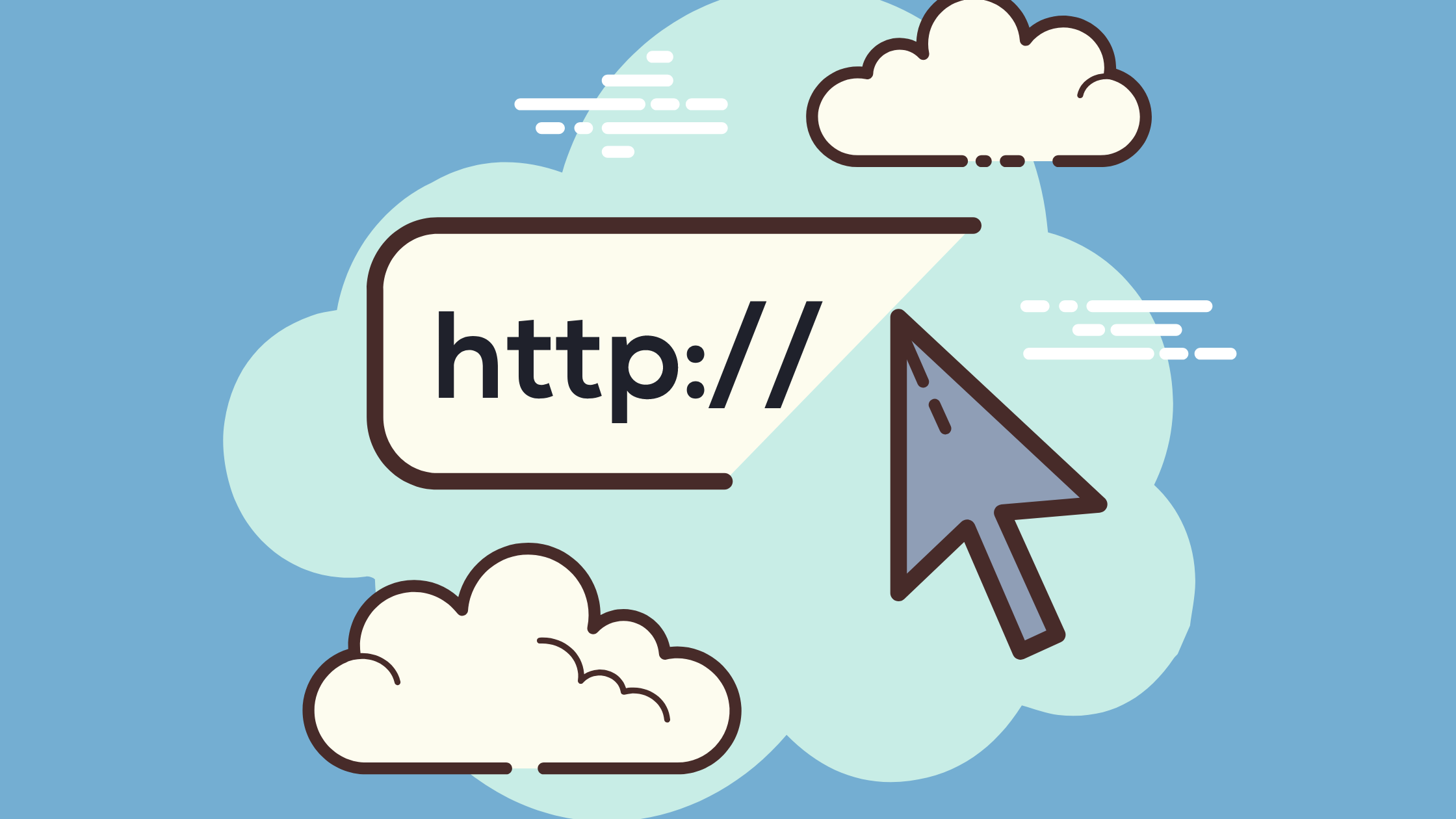The sale and purchase of domain names is an important part of the infrastructure of the internet. Yet, many people use the internet every day without knowing this business exists.
To the uninitiated, the world of buying and selling domains may seem intimidating. It doesn’t have to be hard or confusing, though. With a little guidance and background information, selling a domain can be easy.
Whether you aspire to become a big time domain investor or just want to sell a domain you bought but aren’t using anymore, let’s guide you in the right direction! This guidance will include...
-
What is a Domain?
-
Helpful Domain Vocabulary
-
Why Sell a Domain?
-
Why Do People Buy Domains?
-
How to Sell a Domain
-
Is Selling a Domain Legal?
-
Are There Restrictions on Domains I Can Sell?
-
Who Legally Owns a Domain?
-
Reach Thousands of Buyers Through Sav’s Marketplace
-
How Much Does it Cost to Sell a Domain
-
Earn More by Selling High-Value Domains at Low Prices
-
Transfer Domain Ownership With No Hassle
-
How Do I Get Paid After a Domain Sells?
-
Start Selling Domains With Sav
What is a Domain Name?
Here’s some basic background information before we get started. A “domain name," often shortened to simply a “domain," is the name of a website. Every website has one that is unique to them. Facebook.com, Google.com, and Sav.com are all examples of domain names.

Helpful Domain Vocabulary
Any industry has its own vocabulary. Domain sales are no exception. Knowing a few of these terms will help you sound like a domain expert.
Every domain name has two parts: a web address and a Top Level Domain (TLD).
The web address is the name of the website like Facebook, Google, or Sav.
The TLD is the part at the end that comes after a dot. They are sometimes colloquially referred to as domain extensions.
Examples of TLDs include:
| .com | .lgbt | .shoes | .fish |
| .net | .online | .shopping | .agency |
| .info | .org | .computer | .ninja |
You get the idea. There are thousands of them, not just the ones we all know and love. They keep the internet organized. The .com TLD is the most in demand.
Any discussion of domains will likely include these three words: registry, registrar, and registrant. They sound similar, but they mean different things. Here is the difference:
A registry is a company that manages a TLD. Registries create TLDs, set guidelines for using them, and control the rights of registrars to sell domains with these TLDs. Some examples of registries include:
| Verisign | .com, .net, .name, .cc, and .tv |
| Afilias | .org, .ngo, and several country codes |
| Neustar | .biz, , .us, .co, .nyc, and .in |
| Donuts | .info and 200 other descriptive TLDs |
A registrar is a site where users register, purchase, and manage domains that they own. Registrars are a middleman between registries and customers. Some examples of registrars include:
| Sav (that's us!) | Google Domains |
| GoDaddy | Namecheap |
| Dynadot | Porkbun |
A registrant is a person who registers a domain. It is the industry term for the owner. That’s you and the future buyer of your domain. The term includes all of the categories of domain buyers.
You will also probably hear about nameservers. Computers understand instructions through long strings of numbers known as IP addresses. Nameservers translate the information humans put into browsers into IP addresses and direct information through the internet. Some websites have two and others have four depending on how much data they need to back up. Advanced domain owners can even create custom nameservers, which have the benefit of maintaining privacy.
People who buy domains with the intention to profit off of them are called domain investors or domainers. You can think of it like investing in real estate, except the property is virtual, not physical. The similarity doesn’t end there. The strategy most commonly associated with domain investment is known as domain flipping. This is the act of buying domains and selling them at a profit.
Why Sell a Domain?

If you have a domain you’re not using anymore, your first instinct may be to simply let it expire. If you do that, you could be missing out on a surprising amount of money. You may think there isn’t a demand for your domain or purchasing used domains in general, but you would be wrong. Millions of new domains are registered every month and they change hands all the time. Some people even make a lot of money from buying domains at a discount and selling them for a profit.
Someone could be looking for your exact domain. You listing it for sale would allow them to purchase it earlier than letting it expire would. That’s because domains don’t become available for purchase immediately after expiration. The first opportunity to buy an expired domain comes 30 days after expiration, when it enters a ten day auction. If no one buys it then, it may become available to the public again about 79 to 81 days after the expiration date. Even that is not guaranteed.
Sometimes registries decide to hold onto expired domains and prevent new people from registering them indefinitely. So basically, you have nothing to lose and everything to gain. Even if you don’t sell it for the amount of money you purchased it for, that’s better than getting no money at all.
Why Do People Buy Domains?

It might help you as a seller to understand why people buy domains. There are three main reasons for domain purchases: to use for a website, to sell for a profit, and to park and make money off of ad placements.
Use for a Website
Buying a domain to use for a website is the most obvious reason for a domain purchase. In order to have a website, purchasing a domain is the first step. Website owners are the largest target audience for domain sales. More people have websites than you may think. Naming a website is a big deal.
In today’s digital world, it’s one of the basic building blocks of a brand. Having a website domain that is unique, easy to remember, and follows a predictable pattern is vital for potential customers’ ability to find a business. There are 30.7 million small businesses in the United States and new ones are started every day. There’s a chance your domain could be what they’re looking for. However, the most obvious domain use isn’t the only reason someone might want to buy one.
To Sell for a Profit
The person who buys your domain might not use it for a website at all. They could be a domain flipper, which is someone who buys domains and sells them at a profit when they become worth more money. For many people domain flipping is a lucrative side hustle. There aren’t as many people who invest in domains as there are people who run websites, but the ones who do purchase a lot of domains. It’s not uncommon for domain investors to have hundreds or even thousands of domains in their portfolios.
To the uninitiated eye it may look like domain investors are hoarding domains and keeping them from other people who would use them in more typical ways. However, they play an important role in the domain marketplace ecosystem. Every marketplace wants to have the biggest selection of domains. Well, since domain investors are always selling their domains at profitable prices, they make that happen while increasing the amount of commission the marketplace can collect.

To Make a Passive Income
A parked domain is a domain that does not have a website set up on it. If you’ve meant to go to a website and landed on a “Coming Soon” page, you’ve seen a parked domain.
Sometimes, these pages have ads on them. The owner of a parked domain with ads earns a passive income based on how many people see them. This is commonly known as cash parking. Many people who cash park are either waiting until the right time to sell their domains for maximum profit or making some money while they work on setting up their websites. Sav does not currently offer a cash parking service, but our friends at Sedo have a good one.
How to Sell a Domain
In order to sell a domain, you need to know where and how people buy them. Parked pages, domain marketplaces, and use of domain brokers are the main ways buyers find domains. Some combination of these methods will ensure that your domain gets in front of as many potential buyers as possible.
Parked Pages
Parked domains can serve many purposes. For Sale parked pages are designed to let people who type the domain name into their browser know that the domain is for sale. Once the domain has been purchased, they may switch to “Coming Soon” until the owner sets up their website. You never know who might type your domain into their search bar!
Parking a domain is easy and straightforward. The nameservers just need to be set to the registrar’s defaults. Nameservers are the things that connect a domain to a website and direct information through the internet. These are important when you’re setting up a website, but when you’re parking it all you need to do is change them to what the registrar tells you to. Some registrars charge parking fees, but Sav, Afternic, and Sedo offer it for free.
.png?width=584&height=524&name=Sell%20Parked%20Page%20(1).png)
Domain Marketplaces
Hanging up a for sale sign on your domain is not enough on its own to get the word out. That’s where domain marketplaces come in. A domain marketplace is a site focused on buying and selling domain names. Most of these sites, including us, are also domain registrars. A domain registrar is a site for domain registration and management. Though these words do not quite mean the same thing, they can both describe the same site. Domain marketplaces allow any user to list domains for sale and collect a small commission fee.
You are not obligated to pick only one marketplace to list it at. In fact, since the goal is to get your domain in front of as many reputable potential buyers as possible, you can list your domain for sale on as many marketplaces as you want. There are even marketplace networks that will list your domain for sale on several marketplaces at once. This is why it is important to sell at marketplaces with good reputations, wide selections of domains, and honest, straightforward pricing.
Domain Brokers
What happens if a buyer has their heart set on a particular domain, but finds out that it’s already taken by someone else? They either suck it up, place a backorder, or make an offer through a brokerage service. The broker then negotiates a deal on behalf of the would-be buyer. Brokers can also negotiate the price of a domain that is listed for sale on behalf of a customer.
Sav partners with Sedo’s broker service for these negotiations. We use a neutral partner service for this instead of enabling buyers and sellers to directly message each other because emotions can often run high with domain sales. We would prefer to avoid facilitating conflicts between our users. There isn’t anything specific that you as the owner of a domain have to do to make your domain available to these deals. Most registrars have a “Make an Offer” button next to domains in their search results that are already registered.

Is Selling a Domain Legal?
It probably won’t shock you to know that not everyone who purchases a domain has ethical intentions. They could be using a website for phishing or other fraudulent activity. They could use it for illegal content.
Cybersquatting is mentioned so frequently in popular culture that many people think that’s what domain buying and selling is. Cybersquatting or domain squatting is the act of purchasing a domain in order to block someone else from registering it, profit from reselling it at an artificially inflated price, or sell ads on it. Cybersquatters typically do this to domains that they know someone will want to buy back so they have leverage. It is distinct from the legitimate process of buying and selling domains.
Though it’s impossible to control what a buyer does with a domain you sell them, you can protect yourself from common domain fraud. The best way to defend yourself against cybersquatting is to auto-renew your domains so they don’t expire while you still want to use them. Anyone can buy up an expired domain. Even if the buyer doesn’t have nefarious intentions, there is no guarantee that you’ll be able to get it back for a similar price to what you registered it for.
So, yes, selling a domain is legal. There are just rules of engagement that you have to follow.
Are There Restrictions on Domains I Can Sell?
Some of these rules of engagement include restrictions on who can buy and sell which domains.

Copyright and Trademark Restrictions
Though domain squatting is by definition deliberate, copyright and trademark restrictions are the legal problem domain buyers and sellers are most likely to inadvertently run into. Most people probably know that buying disney.net if you’re not affiliated with Disney will likely lead to a lawsuit.
However, it may not be as obvious that the same legalities apply to domains that are deemed similar enough to a trademarked entity that they could confuse the general public. That means domains like facebooks.com, gooogle.com, or amason.com are also a problem.
When in doubt, do a little research to see if there are any trademarks or copyrights that could apply to your domain.
TLD Restrictions
As a seller you should also keep in mind that some TLDs have restrictions on who can register them. For example, .us domains can only be registered by United-States based entities or the US branch of a foreign entity. You can’t register a .nyc domain unless you live in one of the five boroughs of New York City. You know, stuff like that.
You probably know about these for the domain that you own because you had to purchase it at some point, but if you have a TLD with restrictions it may be harder to sell. Similarly, registrars don’t support every TLD because they have to make deals with registries to be able to sell them. If a marketplace does not allow you to list a domain with a less common TLD for sale, that could be why. Sav is constantly adding more TLDs to our platform, you can see an up-to-date list here.

Who Makes the Rules?
There are other rules and systems in place to govern domain names. For example, the system of domain registration ensures that no one can use a domain that already belongs to someone else. Similarly, domains always follow the same naming conventions to keep everything organized and easy to understand.
The governing body of domains is a nonprofit organization called the Internet Corporation for Assigned Names and Numbers (ICANN). This organization makes and enforces domain name regulations and fraud prevention measures. All accredited domain registrars are registered with ICANN and can be forced out of business if they don’t comply with the regulations.
When a registrant buys or sells a domain, they are also bound to ICANN’s policies. The Uniform Domain Name Dispute Resolution Policy (UDRP) is ICANN’s process for resolving disputes related to domain ownership including - but not limited to - trademark disputes.
Who Legally Owns a Domain?
The legal owner of a domain name is the person under whom it is registered. This is the person who has the domain managed in their account. ICANN tracks this by requiring everyone who registers a domain to have accurate, verifiable contact information on file. This is called a WHOIS contact. Every domain is required to list one. It may be the same or different from the default WHOIS contact for the owner’s account.
The process of changing ownership of a domain is called a transfer. These can happen internally through a change of account or externally through a registrar transfer.
.png?width=1024&name=Sell%20WHOIS%20lookup%20(1).png)
Reach Thousands of Buyers Through Sav’s Marketplace and Auctions
Whether you list your domain for auction or at a fixed price, the Sav Marketplace makes it easy to get it in front of thousands of people who are eager to buy. Just follow these steps.
Auction vs. Buy Now Listing
Domain marketplaces typically offer two ways to sell your domains: Auctions and Buy Now listings. People who frequent domain marketplaces often abbreviate Buy Now listings as BINs (buy it now).
A Buy Now Listing is a great idea if you want predictability because it allows you to sell your domain at a fixed price. An auction is a good fit if you’re willing to take a little risk for the possibility of a bigger reward.
How to List a Domain for Auction
If you’ve decided that an auction is the way to go, you have two options for starting one on Sav. You can list a single domain from its settings page or multiple domains from the Marketplace tab. Keep in mind that bidding for all Sav auctions starts at one US dollar and each auction lasts ten days.
From the Domain Settings Page
To list a single domain from the domain settings page:
- Login to your Sav account.
- Navigate to the Domain's Settings page by clicking on the domain within My Domains or using the Domain Search Bar.
- Scroll down to the Sell Domain on Sav section.
- Review and accept the terms in the two checkboxes.
- Click Start Auction.
From the Marketplace Tab
If you would like to start several auctions at once, you can do that from the Marketplace tab.
- Login to your Sav account.
- Navigate to the Marketplace tab.
- Locate the Auctions box.
- Then, enter the domains into the text box with one per line like so:
- example.com
- domain.com
- domainatsav.com
- domainnotatsav.com
- Read and agree to the Domain Name Marketplace Agreement.
- Click Start Auctions.
.png?width=1600&name=Sell%20Active%20Auction%20(1).png)
How to Create a Buy Now Listing
From the Domain Settings Page
The process for creating a Buy Now Listing from the Domain Settings page is similar:
- Login to your Sav account.
- Navigate to the Domain's Settings page by clicking on the domain within My Domains or using the Domain Search Bar.
- Scroll down to the Sell Domain on Sav section.
- Enter the price.
- Review and accept the terms in the two checkboxes.
- Click List Domain.
From the Marketplace Tab
- Login to your Sav account.
- Navigate to the Marketplace tab.
- Locate the Buy Now box.
- Then, enter the domains into the text box with one per line like so:
- example.com,90
- domain.com,70
- domainatsav.com,60
- domainnotatsav.com,200
- Read and agree to the Domain Name Marketplace Agreement.
- Click Upload.
Updating Prices for Buy Now Listings
What if your domain isn’t selling at the price you listed? Or what if you click “List” and wonder if you could do better?
No worries! Buy Now Listings let you update the price.
From the Domain Settings Page
- Enter the new price.
- Review and accept the terms in the two checkboxes
- Click Update Price.
From the Marketplace Tab
- Follow the same steps as you did to initially list it, except with the new price.
Removing Buy Now Listings
Unlike Sav auctions, you can cancel a Buy Now listing if you change your mind.
To do this from the Marketplace tab, type the domains into the box the way you did when you listed them except with the word remove instead of the price. It should look like this:
-
- example.com,remove
- domain.com,remove
- domainatsav.com,remove
- domainnotatsav.com,remove
From the Domain Settings page, simply locate the buy now price and click Delist Domain.
.png?width=1600&name=Sell%20Buy%20Now%20Listing%20(1).png)
How Much Does it Cost to Sell a Domain?
Domain marketplaces collect a modest commission on every sale. If a marketplace asks you to pay a listing fee, run the other way. If the purchase requires a transfer to another registrar, the buyer pays the transfer fee in addition to the purchase price.
Earn More by Selling High-Value Domains at Low Prices
Now that you know about selling one domain, let’s get into advanced domain sales: selling for a profit. If any of the earlier mentions of domain investing sound appealing to you, it’s not out of reach. Follow this advice and you’ll be able to start building your skill as a domainer.
How Much Can I Sell a Domain For?
You may be wondering “How much can I sell a domain for?” The answer is complicated. Domains sell for anywhere from sixty nine cents to millions of dollars. How much you paid for it is not necessarily a good indicator of how much you will be able to sell it for, especially if a significant amount of time has passed since you purchased it.
If you have limited knowledge about domains, the massive range of possible prices may seem arbitrary or even nonsensical. However, there is a method to the madness.
What Makes a Domain High Value?
The main thing you need to know is that the amount of competition a domain has for ownership determines its value. But what makes a domain in high demand? Here are some examples of traits that make a domain competitive and valuable:
- Common Tops Level Domains (TLDs):
- A .com or .io domain will typically be worth more money than a niche TLD like .fish, .gay, or .computer.
- Short length
- Brandability:
- People want domains they can remember. This is why there is more demand for domains with:
- Common words and abbreviations
- Easy spelling and pronunciation
- Industry keywords
- People want domains they can remember. This is why there is more demand for domains with:

Though unlikely, it’s not unheard of for domains to sell for millions of dollars. For example, the most expensive domain, voice.com, sold for $30 million in 2019. 360.com sold for $17 million in 2015. Of course, sex.com sold for $13 million in 2010. If you take a look at the rest of the most expensive domain names, you’ll notice that all of them fit at least two valuable domain traits.
In short, the more competition there is for a domain, the more money it’s worth. If you’re still unsure about pricing, you can get inspiration from a database of previous domain sales like NameBio.com and DNPric.es or get an automated appraisal from Estibot.
What Makes a Good Domain Portfolio?
Whether you’re domain flipping, parking, or a little of both, you need to work with high value domains. Many investors also build portfolios with target audiences in mind.
For example, some domainers buy up domains with locations in their names in hopes of benefitting from local markets. Others cash in on domains related to events or culturally relevant topics like the Olympics or World Cup. Others invest in domains with keywords that are sought after in particular industries. It’s best to pick a niche that you have a lot of knowledge about. That way your buying and selling choices will be based on knowledge and not assumptions.
It also helps to invest based on keyword research using tools like Google Keyword Planner or Niche Finder. Domains that combine a business and a geographic area like “chicago plumber” or “new york real estate” are especially convenient to sell.
Some investors collect the same SLD in a variety of TLDs. This means it could be a good idea to buy domains with a popular SLD in a TLD that isn’t taken. This could drive up the value when other investors want to buy it for a complete set. For example, if coolwebsite.com, coolwebsite.net, coolwebsite.co, and coolwebsite.info are all taken, there’s a chance the owner may be willing to pay a lot of money for coolwebsite.io.

How to Get Started With Domain Investment
Like any other investment, domaining is all about the long game. The first step is buying domains to fill up your portfolio. Placing backorders and bidding on expired auctions are great, cost-effective ways to do that.
Placing a backorder is a way to claim a domain once it expires and is released to the public. Backorders are not guaranteed because other services will also attempt to catch them once they’re released, but they can be a great opportunity to get in on the ground floor of a high value domain.
Thirty days after a domain expires at Sav, it goes into an exclusive expiring auction. During this time, anyone is welcome to bid on the domain. Like all other Sav auctions, the bidding starts at 1 USD. This makes these auctions great opportunities to buy valuable domains at low prices. Once you’ve built up a good collection, wait a bit.
Once a domain becomes worth more money, sell it. Rinse and repeat. This process takes time, but patience and timing pay off.

No-Hassle Domain Ownership Transfer
Once someone buys your domain, there are two potential processes of getting it into their digital hands. If the domain is registered where the purchase takes place, it can arrive in the buyer’s account instantly. If the domain is not registered at the same place where it is bought and sold, a transfer needs to take place. Regardless of the registrar, the responsibility of providing the authorization code and initiating the transfer lies with you as the seller.

How Domain Ownership Transfers Work
Owning a domain requires having an account with a registrar in order to manage it. Not every registrar has the exact same transfer process, but in general transfers between registrars involve unlocking a domain and entering an authorization code. Authorization codes are also called transfer codes, auth codes, and EPP codes.
Expediting Transfers
The optional next step is to approve or “ACK” the outgoing transfer once the domain enters pending transfer status. This will expedite the transfer. If you ever start a transfer and decide that you don’t want to proceed with it, you can follow similar steps to reject or “NACK” it.
Fast Transfer Services
Any seller has the option to speed up the transfer to the buyer’s account by enrolling in a fast transfer prior to the sale. Fast transfers work by automating the receiving and entering of the auth code. This allows domains to arrive in another account in minutes where it typically takes days.
The most popular fast transfer providers are Sedo and Afternic. Both have networks of domain marketplaces including Sav, GoDaddy, Network Solutions, Dynadot, Namecheap, and more.

Is My Domain Eligible for Fast Transfer?
Keep in mind that not all domains are eligible for fast transfers. For both Afternic and Sedo, a domain must have an eligible TLD, be listed at a fixed price under 100,000 US dollars, cannot have any restrictions on transfers, and cannot be the subject of any ongoing copyright, trademark, or abusive content disputes.
What About Purchases That Don’t Require a Transfer?
If you purchase a domain from the site where it’s registered, the change of ownership process is much easier. This is called a change of account or internal transfer. They typically take place instantly after a sale goes through. However, you can carry one out manually from the domain’s settings page or from bulk actions. Once the domain arrives in the buyer’s account, it will update the WHOIS contact information.

How Do I Get Paid After a Domain Sells?
The best part of making a sale is getting paid! That's why it's important to make that happen quickly and securely after a domain sale.
Many domain sellers accomplish that by using an escrow service. An escrow service is a neutral third party that will receive the funds from the buyer, then give them to you. In short, their job is to make sure you get paid what you’re owed.
Once the marketplace has received the money from the buyer, it will be added to your available balance. After that, you will be able to request a payout. Payouts can be sent to a variety of payment methods that vary depending on the marketplace. It usually takes about a week to receive payment after a domain is sold.

What are the Perks of Selling a Domain on Sav?
As you can see, Sav is not the only place to sell domains. You may be wondering why you should pick us over the other domain marketplaces.
Well, we’re not a regular registrar, we’re a cool registrar!
All domains purchased at Sav include:
- Free privacy protection
- Free SSL certificates
- Free DNS powered by Cloudflare
- A free trial of our website builder
We also offer:
- The lowest commission rates in the industry
- Fee-free backorder placement
- Secure payments
- Low pricing for all users
We’re a growing company and we’re excited to have you as a part of our future. Who doesn’t want to say they liked something before it was popular?
Start Selling Domains With Sav Today
Now that you’ve gotten some guidance, let’s hope you feel more confident about the process of selling domains. If you get it in front of as many potential buyers as possible, pay attention, and be patient you’ll be a successful domain seller in no time.
If you get good at it, it could even be a lucrative side hustle. We’re happy to make every part of that process as easy and inexpensive as possible. Good luck and happy selling! Create an account today to get started!
Newsletter
Popular
Top Articles
Recommended articles
A Small Business Owner’s Guide to Website Maintenance
Building a website and going live are just the beginning of your journey as a website owner. Websites need continued maintenance in order...
Read moreWhat Are Domain Brokers and How Can They Help You?
Whether you’ve been in the game of buying and selling domains for a while or you’re just getting your feet wet, you’ve probably come across...
Read moreWhat is Domain Authority?
What is Domain Authority and What is it Used For? Domain Authority (DA) is a metric first developed by Moz that predicts how likely a...
Read more



